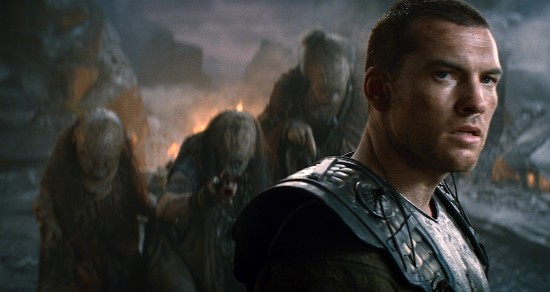
Warner Bros has released 41 production photos for Louis Leterrier’s remake of Clash of the Titans. The film screened for press this past week. I haven’t seen the film yet but I’ve heard it isn’t that great. At ShoWest, I did see a 7-10 minute presentation of post production-converted 3D clips from the film, and the 3D looked pretty flat and unnatural. Check out the full gallery of production photos now, after the jump, along with the production notes for the movie. Click on the images to see the high resolution images.
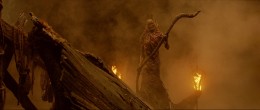
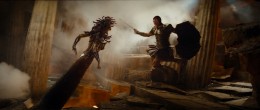
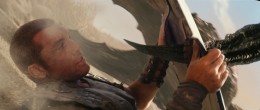
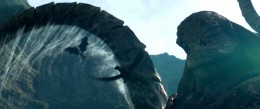
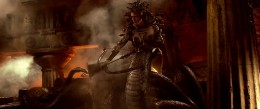
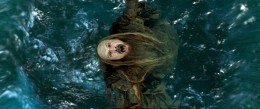
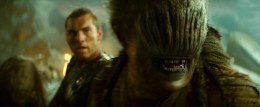
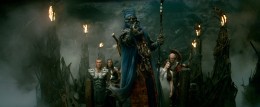
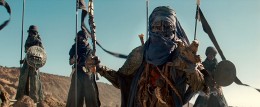
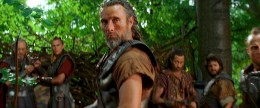
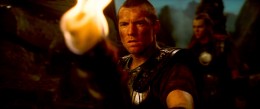
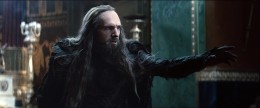

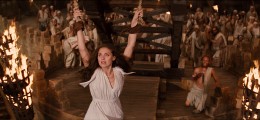
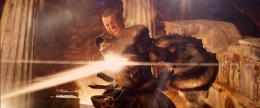
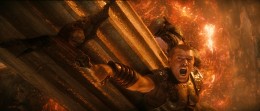
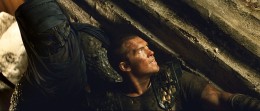
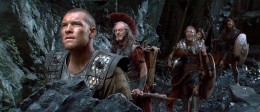
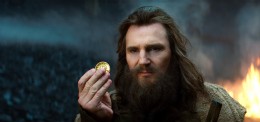
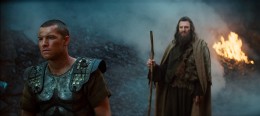
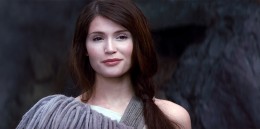
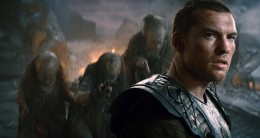
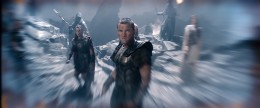
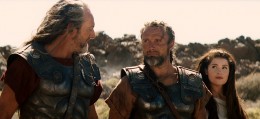

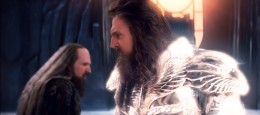
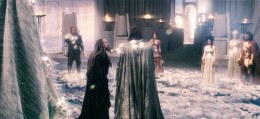
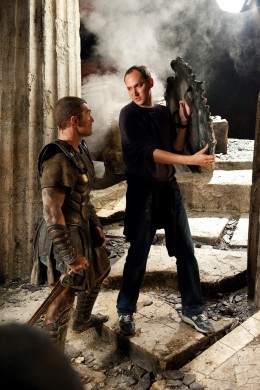
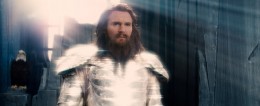
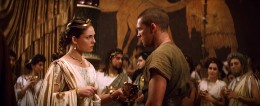
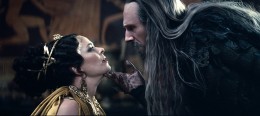
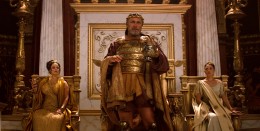
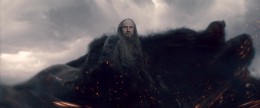
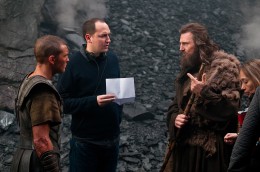
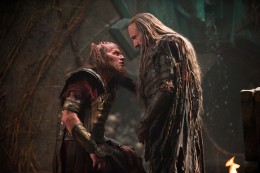
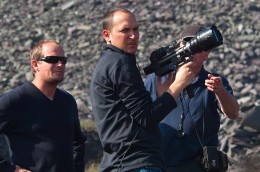
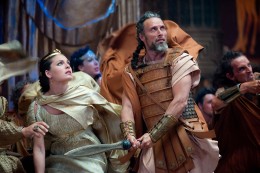
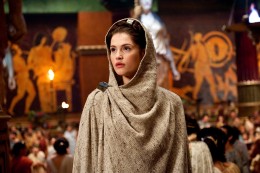
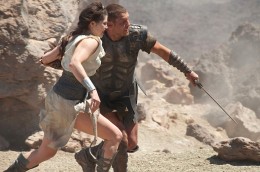
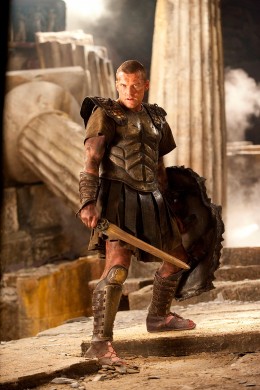
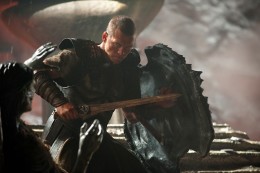
Synopsis
In “Clash of the Titans,” the ultimate struggle for power pits men against kings and kings against gods. But the war between the gods themselves could destroy the world. Born of a god but raised as a man, Perseus (Sam Worthington) is helpless to save his family from Hades (Ralph Fiennes), vengeful god of the underworld. With nothing left to lose, Perseus volunteers to lead a dangerous mission to defeat Hades before he can seize power from Zeus (Liam Neeson) and unleash hell on earth.
Perseus sets off on a perilous journey deep into forbidden worlds, leading a daring band of warriors, including Draco (Mads Mikkelsen), an experienced soldier who encourages the defiant Perseus to make use of his god-given abilities. Battling unholy demons and fearsome beasts, they will only survive if Perseus can accept his power as a god, defy his fate and create his own destiny.
Propelling audiences into a mythological world of epic action and adventure, “Clash of the Titans” will be presented in 3D, making the gods even more formidable, the creatures even more fearsome, and taking audiences even deeper into the mythological realm of Perseus’ quest.
“Clash of the Titans” is being directed by Louis Leterrier. Leading the international cast is Australian actor Sam Worthington (”Avatar”) as Perseus, the mortal son of Zeus, king of the gods. Academy Award® nominee Liam Neeson (”Schindler’s List”) takes on the role of the mighty Zeus, and Academy Award® nominee Ralph Fiennes (”The English Patient”) plays the role of Hades, god of the underworld, who feeds on human fear. Rounding out the cast is Gemma Arterton as Io, Perseus’ mysterious spiritual guide throughout his journey; Mads Mikkelsen as Draco, who takes up his sword to join Perseus’ quest; Jason Flemyng as Acrisius, a one-time king turned hideous beast; Danny Huston as Poseidon, god of the seas; and Alexa Davalos as Andromeda, a princess doomed to lose her life if Perseus does not succeed.
Louis Leterrier directs “Clash of the Titans” from a screenplay by Travis Beacham and Phil Hay & Matt Manfredi, based on the motion picture “Clash of the Titans,” directed by Desmond Davis and written by Beverley Cross. The film is produced by Basil Iwanyk and Kevin De La Noy. The executive producers are Academy Award® winner Richard D. Zanuck (”Driving Miss Daisy”) and Legendary Pictures’ Thomas Tull, Jon Jashni and William Fay.
The behind-the-scenes team includes director of photography Peter Menzies, Jr., production designer Martin Laing, editor Martin Walsh, editor Vincent Tabaillon, Academy Award®-winning costume designer Lindy Hemming (”Topsy-Turvy”) and composer Ramin Djawadi.
Also serving on the creative team are Oscar®-nominated visual effects supervisor Nick Davis (”The Dark Knight”); Oscar®-nominated prosthetics supervisor Conor O’Sullivan (”The Dark Knight,” “Saving Private Ryan”); Academy Award®-winning special effects and animatronics supervisor Neil Corbould (”Gladiator”); Academy Award®-winning makeup and hair designer Jenny Shircore (”Elizabeth”); and Academy Award®-winning production sound mixer Ivan Sharrock (”The Last Emperor”).
Warner Bros. Pictures presents, in association with Legendary Pictures, a Thunder Road Film/Zanuck Company Production, a Louis Leterrier Film, “Clash of the Titans.” The film will be presented in RealD 3D where available, and will be distributed worldwide by Warner Bros. Pictures, a Warner Bros. Entertainment Company.
The film has been rated PG-13 by the MPAA for fantasy action violence, some frightening images and brief sensuality.
The Production
“Release the Kraken!”
With larger-than-life mythical beasts, breathtaking vistas spanning the depths of hell to the heights of Mt. Olympus, and battles to-the-death between man and the gods, “Clash of the Titans” is a mammoth spectacle that will grab audiences from the first scene and take them on a wild, 3D ride through an ancient Greece only imaginable in the 21st century.
“It’s a big, fun adventure, a big escapist movie, and I love escapist movies,” director Louis Leterrier says. “The story is heroic, it’s mythic, it’s romantic, it’s about fulfilling your destiny. There’s fantasy and fun, and it’s a bit scary, too. Add to that an unbelievable cast like Sam Worthington, Ralph Fiennes and Liam Neeson, and it was truly an exhilarating experience.”
With Leterrier at the helm, the stars of the film were eager to step into the mythical world. “I am always a fan of a director who is willing to take risks,” says Sam Worthington, who plays the film’s central character, Perseus. “Louis’ vision for the film was big, bold and heroic. He wanted it to be a thrilling kind of popcorn ride, and I thought, ‘Well, that’s a good director to go into battle with. I want to be a part of that.’”
Close friends Liam Neeson and Ralph Fiennes, who play the roles of Zeus and Hades, respectively, agreed. “My kids encouraged me to do it,” Neeson says, “and I knew that with Louis and all the incredible computer wizards and technicians they had on the crew, they were going to make this thing just jump off the screen.”
“I’ve always loved the Greek myths and the wealth of things they can do to make special effects really kick ass now, I think, is extraordinary,” Fiennes allows. “I also thought the script had a vividness and an epic quality that was really appealing.”
A real fan of the original film, Leterrier felt a bit like a kid in a candy store during filming. “1981’s ‘Clash of the Titans’ was one of my favorite movies–it was actually one of the first magical movies I ever saw. I was wowed by it. I jumped at the chance to do my own version.”
The director’s enthusiasm for the material showed. Producer Kevin De La Noy observes, “Louis has a love of filmmaking and storytelling, and he approached every challenge with humor and a determination to make it work. His tireless energy was an inspiration to us all. He got engrossed in each and every shot; he could see it clearly and he wanted to impart that to everyone. And he got the desired results.”
Leterrier wasn’t the only filmmaker energized by the subject matter. States producer Basil Iwanyk, “I remember waiting in line for two hours when I was 11 years old–one of the best movie weekends in my life–and seeing “Clash of the Titans” with all of its monsters and battles and princesses and people with swords…things I’d never seen before.”
Taking on the task of bringing the cult classic into the 21st century were screenwriters Travis Beacham, Phil Hay and Matt Manfredi.
“I was so happy with what the screenwriters did,” recalls Leterrier. “It wasn’t just a shot-for-shot remake to be done with modern technology. It maintained the integrity of the original, but it was completely different.”
“I loved the original, so this was an irresistible, if intimidating, proposition,” says Beacham. “One of the things I loved about it, and myths in general, is that they put familiar human struggles in the context of impossible circumstances, to express things that couldn’t otherwise be expressed. Want to save the girl? How bad? Because you’ll have to fight this unstoppable monster to get to her. Want to find yourself? You’ll have to journey to the edge of the world and back again. Want to rebel against your parents? Well, your dad’s a god, so let’s see what you’re made of.”
“We talked a lot about the tone we were going for, trying to make it a fun adventure with a great sense of momentum but with the action rooted in the characters and what they were going through,” Hay says.
Manfredi adds, “To us, action only works if it’s about emotion. We wanted to use every action beat to reveal who Perseus is in that moment–the action is the proving ground that forges his character and his relationships. It has to have consequences to people we care about.”
“It’s classic storytelling–literally,” says Iwanyk. “It’s life and death, betrayal and courage…all played out by and humans and monsters and gods. My goal in reinventing this movie was to give people that same feeling I had as a kid, but with all the advanced technology available today.”
Helping to achieve that goal, a new dimension–3D–was added to 2010’s “Clash of the Titans.” It fit perfectly with the filmmakers’ vision. “Even though we weren’t shooting in 3D, I designed a lot of the shots with that visual style in mind–stepping into new worlds, big creatures coming at you, fantastic images,” attests Leterrier, whose foresight turned out to be quite fortunate. “The conversion to 3D adds incredible depth to each scene, enhancing the story and providing an all-encompassing ‘Clash’ experience.”
A Hero’s Journey
In the mythology of “Clash of the Titans,” man was created by the gods, and in turn his prayers provided the deities with immortality and strength. And, thanks to man’s worship, the gods could rule over him. “It’s a little bit of the carrot and the stick,” explains Leterrier, “but there’s a little too much stick and not enough carrot. The humans are starting to rebel, so there’s tension. They need each other, but at the same time, they are at odds.”
The hero of the film, Perseus, having just lost the only family he’s ever known, is torn between the two worlds: that of man, in which he was raised, and the world of the gods, where many believe he belongs. Sam Worthington portrays the demigod who is reluctant to embrace, or even accept, his birthright as the son of Zeus.
“The actor playing Perseus had to have that rare combination of a great heart and a strong exterior,” asserts Leterrier. “Sam is one of the most wonderfully explosive actors I know, but what was most important to me is what he wanted to say through the character. He gave us a robust, determined, yet questioning Perseus, which is exactly what I felt the role required.”
Iwanyk offers, “When Sam walked into the room, we knew he was Perseus. We immediately liked him, and we liked the fact that he wanted to work hard as an actor, and understood what the role would require of him. There’s both an intensity and a youthfulness to Sam. He’s tough and he has an incredible physicality. You believe he has a god in him.”
“Perseus is a simple fisherman when you first meet him, he leads a simple life,” notes Worthington. “But circumstances throw him on this quest to avenge his family’s death at the hands of the gods. Apart from the epic nature of the film, what really appealed to me was the idea of family–of fathers trying to reacquaint themselves with sons, sons wanting to know why fathers don’t love them or why they rejected them, as well as brothers of a sort bonding on different levels.”
Iwanyk states, “Perseus is essentially collateral damage in the war between man and the gods. He stumbles into Argos, the cradle of civilization in ancient Greece, which is crumbling at the hands of the very gods who killed his family. And that’s where he discovers who he really is.”
Perseus’ refusal to acknowledge his Olympian side was an important factor for Worthington, who says he “didn’t want Perseus to have to be a god in order to succeed. I think the fact that he rejects it, that he wants to do everything as a man, is a good message. He doesn’t like bullies, which is how he sees the gods, and he thinks enough’s enough; someone’s got to take a stand and it may as well be him. He starts off quite petulant and bombastic of course, but he’ll have to grow up and learn to accept his birthright if he’s going to survive.”
One character who doesn’t appreciate Perseus’ independence is his natural father and king of the gods, Zeus, who feels that Perseus should not only want, but should ask for, his help. Having been accustomed to unquestioning love from his own creation–humanity–Zeus is uncertain as to how to deal with its wavering devotion and mounting uprisings.
“Zeus, more than any other god, loves humans,” says Leterrier. “He created them, and he is torn because he loves them so much he doesn’t want to strike them with all his might and destroy entire armies. So he has found cunning ways to get them to obey…but the times are changing.”
It doesn’t help that his brother Hades, lord of the underworld, is pressing Zeus to allow him to handle things in his own way. Esteemed actor Liam Neeson, who took on the role of the conflicted king of Olympus, explains the delicate relationship. “Eons ago, Zeus, Hades and their brother, Poseidon, took control of the universe from their parents, the Titans,” says Neeson. “Zeus took over the heavens and Poseidon got the oceans, but Zeus tricked Hades into ruling the underworld. So Hades now sees his chance for revenge by tricking Zeus into starting a war with the humans. Initially fooled by Hades’ brotherly pleas, Zeus thinks maybe Hades is right…maybe they’ve got to teach humanity a lesson.”
“We could have gone two routes with Zeus,” observes Leterrier. “We could’ve gone with the white hair, white beard, toga, throne-sitting Zeus. But that’s not what I wanted. This Zeus leads a war; he’s active, he’s tough. His weakness is that he loves mortals–especially mortal women.”
“Liam’s physicality was perfect for the part,” Iwanyk states of the actor. “He’s big, he’s strong, he has that great, authoritative voice, but he has a very sweet face and very emotional eyes. The Zeus that we conceived is king of the gods and very powerful, but he’s also hurt; he’s thrown, he’s confused, he’s gone soft. Liam’s a very intense, imposing figure, but he can play that softness, that emotion in his face.”
Preying on his brother’s pain at the loss of mortal devotion, Hades convinces Zeus to let him put fear into the hearts of men, saying that fear will bring their prayers back to Zeus and, along with them, Zeus’ power over them. But in reality, human fear makes Hades stronger, not Zeus. Acclaimed actor Ralph Fiennes plays the part of the cunning underworld ruler eager to take his rightful place in the heavens.
“Ralph is not what you would consider a physically imposing man,” Iwanyk says, “but he has an ability to convey tremendous intensity, rage and strength. He wanted to bring this incredibly terrifying, unique character to the screen, and he did.” The producer also appreciated what Fiennes real-life friendship with Neeson added to the mix. “Hades and Zeus have a very complicated relationship onscreen, because they are not just adversaries, they are brothers. Ralph and Liam’s friendship really added to that dynamic.”
“The gods are in a state of emergency,” states Fiennes, “and Hades walks onto Olympus, with its vast marble hall set up high in the clouds, and sees what he has been missing being down below with the damned and the dead for so long. And he isn’t a god of compassion. He’s been betrayed by Zeus, and he figures it’s his turn now. So he goes to the city of Argos and demonstrates his wrath and his power over them. He demands the sacrifice that ultimately sends Perseus on his expedition.”
The sacrifice Hades demands is a heavy one indeed–the life of Argos’ princess, Andromeda, to be fed to his monstrous spawn, the Kraken, at the coming eclipse. Alexa Davalos plays the fated royal, a kind and generous young woman who is prepared to give her life if it will save the people of Argos.
“Andromeda is definitely headstrong and rebellious,” says Davalos. “But there’s a vulnerability that goes along with those qualities. She’s fighting the history and the royalty of her family and forging her own way; she’s truly connected to the people in a way her parents aren’t.” Despite Andromeda’s willingness to sacrifice her life, Perseus is not willing to let her die without a fight, which becomes the impetus for his heroic mission.
Accompanying Perseus on his quest is Io, whose destiny is tied to his, and who is something of a guardian angel to him. Actress Gemma Arterton portrays the mystical guide–neither mortal nor god–who shadows Perseus on his travels. Like many in the cast and crew, Arterton was a fan of the original film.
“I watched it about 50 times as a kid, so when I learned I had a role in the new version, I was over the moon,” she relates. “I pretended that I wasn’t fazed by it, but I quickly phoned my mum and my sister.” Ironically, the character she plays wasn’t in the original movie. “That was even more exciting because I got to be involved, but also do something new and different to me.”
Leterrier describes the contrast between the two women in Perseus’ story. “To me, they represent the two worlds that he is torn between–the world of man that he was raised into and the world of the gods that he belongs in–and he will have to make a choice.” The director couldn’t have been more pleased with the casting of both women. “Alexa and Gemma are wonderful actresses. Like the princess, Alexa is extremely grounded and extremely human, whereas Gemma is very ethereal, with porcelain skin that can look almost transparent…like you could go through her if you were to touch her face.”
Neither actress was too delicate, however, for the physical demands of their roles. “They were both part of the adventure, so like the boys it was, ‘Come on, let’s go girls,’ and they did, and it was great,” the director says.
While saving Andromeda’s life is the catalyst for Perseus’ journey, and Io acts as his spiritual guide, Draco, a world-weary soldier, is the first to take up his sword and join the quest. He becomes something of a mentor, endeavoring to impart some knowledge of swordplay and battle strategy to the stubborn demigod along the way.
“Draco is a body man to the princess and a former warrior who’s heading toward retirement,” says Mads Mikkelsen, who plays the part. “He knows the Kraken can’t be killed, so when he gets this final task to go with Perseus, he’s not happy about it, but his training makes him the best man for the job.” Fortunately, the actor and former gymnast felt differently. “When they said they wanted me to swing around on a rope with a sword, it reminded me of what I used to dream about as a kid, so that was very cool.”
One of the characters Perseus, Draco and their fellow journeymen come up against is half-man, half-monster Calibos. A former king, Acrisius, he became a beast when Zeus struck him with a lightning bolt. Veteran actor Jason Flemyng plays the dual role. “I’ve known Jason for years and he’s a terrific actor,” remarks Leterrier. “He really wanted to play Calibos, and he’s played Jekyll and Hyde before, so I thought it would be perfect for him.”
“When you’ve got four hours of prosthetics to apply, they say, ‘Let’s get Flemyng!’” jokes the actor. “But I was eager to work with Louis again. And any day you walk onto a set and Liam Neeson and Ralph Fiennes are there is a great day’s filming.”
Also among the many talented actors from around the globe in the film’s cast are Danny Huston as Poseidon, god of the sea; Pete Postlethwaite as Spyros and Elizabeth McGovern as Marmara, Perseus’ adoptive parents; Luke Treadway as Prokopion, Argos’ vociferous prophet of Hades who continually calls for Princess Andromeda’s death; and Liam Cunningham, Nicholas Hoult and Hans Matheson as Solon, Eusebios and Ixas, three of the memorable journeyman who aid Perseus in his quest.
The impressive cast made up something of a “United Nations” on the set, with representation from America, Australia, Denmark, Ireland, Israel, France, England, Poland, Scotland and more.
A Frenchman himself, Leterrier recalls asking several of his actors at the start of filming if they were “‘ready to be wet, dirty, miserable, hot, hungry and in pain for the next six months?’ Each person said ‘yes.’ And they regretted it every day!” he laughs.
Gods and Monsters
Apart from the human characters and in keeping with the mythology of the story, “Clash of the Titans” is filled with mythical beasts and creatures–from the winged Pegasus to the deadly Medusa to the giant, scorpion-like scorpiochs and the ultimate monster, the fearsome Kraken. Creating these creatures involved a blend of practical and visual effects elements.
Visual effects supervisor Nick Davis notes, “We were dealing with Olympus and with Hades, so we had heaven and hell, and we had gods and monsters; there were aspects of the fantastical inherent in the story. But at the same time, we wanted it to be photo-realistic. We want people to believe a horse is flying and that harpies are real within the realistic grounding we’ve given the movie.”
For the scorpiochs fight, Davis’ team began by blocking out what characters would be in the massive battle. They worked with the director to determine the scale of each scorpioch, which was approximately 25 to 30 feet, from claw-to-tail.
The special effects team, led by special effects and animatronics supervisor Neil Corbould–who, as a teenager, worked on the original “Clash of the Titans,” adding feathers onto Bubo the owl–built a full-scale rig to act as a makeshift scorpioch, in order to give the actors something with which to interact during the fight sequence. “The crossover between special and visual effects was close on that rig,” says Corbould. “Nick designed this fantastic 3D scorpion, which we used as the design for a physical model for the rig.” The effects team then used a remote system to operate the rig via joystick controls.
“We also had a ride-rig, which was a computer-programmed gimbal, with the shell of a scorpioch on top of it,” says Davis. “The character Draco leaps onto the back of it and goes on a wild, spinning ride.”
“It was a very technical rodeo ride,” adds Corbould. “It was capable of moving a meter a second in every direction–up, down, and with a complete 360-degree rotation as well. Plus we had 30 feet of track that could go up and down. It was quite difficult to stay on; it really threw you around.”
Their most difficult challenge with the rig itself was the speed. “Scorpions really move quickly, so we tried to attain that level of speed,” says Corbould. “But we had to slow it down a bit. Even a stuntman couldn’t have stayed on it at its top speed.”
Just getting the rig up to the location was an incredible undertaking, as filming in a national park in Tenerife–Teide, the third tallest volcano in the world–meant strict guidelines had to be followed. The crew could not take any vehicles off the path up to the set. This meant taking the hefty scorpioch rig as far up as they could go by truck, and then physically hand-carrying it in sections over the rocks to the set. The final rig took four days to build, with the full rig, computer and operating equipment having to remain at the elevation, in the elements, across the four days. The team could only hope that it wouldn’t blow away each night.
Davis’ team also used a combination of CGI and motion capture to bring to life the Medusa, the Kraken, the harpies, and Pegasus, among others. Unlike any incarnation of Medusa before, this version of the lethal character not only has a head crowned by snakes, but also a body that is half-human, half-snake, and able to hunt her unwanted visitors with stealth and steel. Digital effects turned Russian supermodel Natalia Vodianova into the gorgon whose looks do kill.
Perhaps the mythical creature most critical to the story was the flying horse Pegasus, a truly majestic animal. Leterrier offers, “Pegasus is a winged horse, he’s the companion of the gods, and no human has ever ridden one. He initially fights Perseus, which is yet another obstacle for our hero to overcome.”
“The problem with flying horses is that horses don’t fly,” Davis says. “So you’re immediately overcoming a lot of aerodynamic problems in order to make it look natural.”
Two Friesian stallions–a large, black breed of horse originating in the Netherlands–were used for the role: Bonce worked as the main Pegasus, with the stunt rider riding Gallo.
The visual effects team developed a complex system of putting tracking markers on the horses and using special cameras to track the motion very carefully. Completing the illusion, wings were placed on afterward, via digital imaging.
In addition to the two horses, the cast and crew also worked with a menagerie of other animals including four camels, a seven-foot, 44-pound Burmese albino python, two young oxen and a number of dogs. As befitting his owner, Zeus, perhaps the most majestic of the animals was an American Bald Eagle, who became an instant hit on the set; at the end of filming, most of the cast and crew had their picture taken with it. Not only did everyone involved enjoy working with their live animal “cast,” the production also garnered the American Humane Assocations’ highest rating for their care and treatment of the animals.
The design phase for the Kraken–the most feared beast in all of Argos–took a period of approximately five months. Davis relates, “Aaron Sims, our character designer, worked with Louis and me and the art team until we had something everyone was happy with, and then the people at MPC (Moving Picture Company) took over to work through the texture, and so on. The water was also a huge element. The Kraken rises out of the sea, so it’s got water cascading off of it on a massive scale, but part of it is always in the water, thrashing around. It was quite a challenge.”
“The Kraken is mysterious, it’s a legend,” says Leterrier, “so we didn’t want to reveal it right away. Nick, Aaron and MPC did an amazing job creating this unfolding sea monster. There is transparency in the scales, because this is a monster that hasn’t lived in the sun for thousands of years, so there would be subsurface transparency and light would come in and bounce into the shell.”
In addition to the creatures, the special effects unit regularly incorporated a good deal of nature’s elements into the scenes, including wind and water machines, fire and steam. “Neil was supplying us with as much interaction on the set as we could get, be it objects blowing up or falling over, the gimbals and the rig, the explosions and flames and dust hits. We worked together to figure out all the logistics,” Davis says.
With locations in Tenerife, Wales and Ethiopia, the visual effects team had a vast canvas from which to work. Davis continues, “We were building off of those places, so we wanted the city of Argos to look like it really belonged in the cliffs and mountains that we shot whole sequences around. Everything was based on that, and it was a wonderful starting place.”
In Search Of: Greece, 200 B.C.
“We brought a cast and crew of more than 800 people around the globe to capture a real-world scale,” states Leterrier, referring to the far-flung and varying locations utilized for “Clash of the Titans.”
De La Noy notes, “Louis had a pretty clear vision right from the outset. He didn’t want to go entirely into the realm of the digital universe in terms of our world; we clearly had to have digital mythological creatures, but the world the characters inhabited, we wanted to be largely real whenever possible.”
“Clash of the Titans” did indeed shoot around the world, including some sites rarely seen on film before. The Canary Islands’ Tenerife, a tourist destination off the coast of Africa, hadn’t seen a major film production in over four decades.
“Unlike locations I’ve seen many times in movies,” says Leterrier, “this was brand new, with black and white lava, and green trees, and strange cloud formations. It felt like we were above the world, in a place that hadn’t been touched by human hands.”
“The movie is set in ancient times, so we needed a virgin landscape,” asserts De La Noy who, in his earlier days as a location manager, earned the nickname “Fresh Tracks.” “I always liked that,” he continues. “I always got great satisfaction out of going someplace where no one else had been.”
Tenerife provided the production with a great variety of settings, as well as unique opportunities. De La Noy offers, “In the sequence where the statue of Zeus collapses at Argos, we were at 7,000 feet, with the helicopters flying over the top of the volcano. It was the first time that helicopters have flown over there. Our landscapes were all petrified lava streams.”
The production also utilized the surrounding ocean, most notably when the gods unleash their wrath on Argos. It is there that Perseus’ family is killed while on their fishing boat. The vessel used in the film was built in England and brought to Tenerife for shooting; however, it sank when it was first put in the water. After being recovered, it had to be re-corked before it was seaworthy–only to be sunk again, this time on purpose.
In the Canaries, they also shot on Gran Canaria and Lanzarote because those islands offer different backdrops. “The Canary Islands as a whole are a very important and substantial part of this movie–we got a continent’s worth of looks out of a few tiny islands,” says De La Noy. One of the most dynamic features of the islands was a sea of clouds. “We were actually above the clouds. This isn’t going to feel like a claustrophobic movie,” he attests.
The producer calls the cliffs of Los Gigantes a “slam-dunk” for Argos. “There was nothing quite as gratifying as my first trip down there, coming around the corner on a Zodiac, and just looking up to the heavens where these great vertical cliffs rose 300 or 400 meters out of the water. It was exactly what we had aspired to, and there it was, and I could touch it and feel it. It was just fantastic.”
Moving to the very different location of Wales, the production also shot several critical sequences, including scenes at the entrance to Hades, a confrontation between Perseus and Calibos, and the exteriors of the journeymen’s visit with the Stygian Witches. Of the last, production designer Martin Laing states, “In our mythology, when the earth was created by the battling Titans, one of them died and his hand stuck out of the ground and created the environment where our witches live, up in the fingers. They spend their time patrolling the palm of the hand, so that was the look we developed.
“My idea was based on the Wales exterior and it was very dark, very slatey, with lots of misty smoke coming in,” Laing continues. He then showed his designs to Leterrier. “Out of that conversation came the idea of the hand; it grew out of the smoke. It was a great collaboration.”
“Martin came in with this bigger-than-life vision, and I fell in love with it,” Leterrier says.
Laing says that both he and his director are also big fans of texture. “In Wales, we found this wonderful slate quarry, with all this slag falling down the side of a hill. We took those textures, the gritty reality of those elements, and brought them to our set.”
Though the production made extensive use of its numerous outdoor locales, not everything could be shot on location, so several elaborate sets were built to accommodate the rest. Sets created at Shepperton Studios included the Stygian Witches’ home; the ethereal home of the gods, Mount Olympus; and parts of Argos and its Basilica.
At Pinewood Studios in Buckinghamshire, a tank was utilized for underwater scenes and close-ups of the dead souls pulling Charon’s ferry on the River Styx, among other things. Longcross–a former military testing area for the British government and now both a film studio and an automotive testing facility–housed the city of Argos.
“For Argos, we could have gone to places with real walls and so on, but the problem was I wanted massive destruction, and the best way to destroy is to build,” says Leterrier. “So we built this huge city over 40,000 square feet, and I was so excited because I was going to destroy it all. I was like a kid playing with my Legos…on a huge scale.”
Longcross also held Charon’s ferryboat, the sacrificial rig for the Kraken, Queen Danae’s bedroom, the armory, the catacombs where Hades and Calibos meet, and Medusa’s Lair, the first set utilized on the shoot.
“The fair thing to say about this movie is that it’s based on Greek mythology, not Greek history, so I got to play a little bit, within the bounds of the architecture of the time,” says Laing. “Medusa’s Lair was designed around Athena’s Temple. Athena was a wonderful goddess when Medusa entered her temple seeking her help. But Athena got angry with Medusa, crumpled the temple and threw it into the barren wasteland. So I made a quick paper model of Athena’s temple, then crushed it and bent it, looking for camera angles to create. When it was built, it gave us a wonderful playground that we could film in. The scene is really a cat and mouse chase, with lots of places to hide, almost like a jungle gym.” The lair was set inside a huge cavern in order to facilitate darkness and interesting textures as the camera moved throughout.
“It was an interesting way to start the movie,” considers director of photography Peter Menzies, Jr. “We wanted it to look and feel as close to hell as we could make it–steam, fire, explosions. The temple was three layers high, plummeting down into a lava pit below. We knew that every shot needed to have as much depth and layering as possible, not only in Medusa’s lair, but throughout. Louis and I really pushed for the moving camera, so we’d really feel we were with Perseus on this journey. We used technocranes nearly every day, as well as steadicam and cablecam, for really fluid storytelling, because there’s a lot of story to tell.”
“When we finished the first week of principal photography in Medusa’s lair, we were all sitting down exhausted, sweating, deaf from these explosions that were blasting, burnt because of all the fire,” recalls Leterrier. “And we loved it. We looked at each other, out of breath, and just smiled and exploded into laughter. We all said, ‘Making this movie is going to be a great ride.’”
Springing Into Action
“Clash of the Titans” is packed with big-scale, epic action, and to work out the logistics of so many battles, Leterrier turned to stunt supervisor Paul Jennings. “He’s an amazing man,” says the director. “He assembled this remarkable team of stunt men and came up with fantastic fight choreography. You can tell him you want to see a sword fight like nothing you’ve ever seen before, and he will come back to you with it.”
Leterrier quickly learned how to foster a sense of friendly rivalry among his cast, while enabling them to learn the basics that they would need to know to perform. “I encouraged a bit of one-upsmanship,” he says. “As the guys were learning swordplay, there was an unspoken contest as to who could be the best. Sam was a great leader, and so was Mads, and soon the rivalry became more like a brotherhood. It was great fun.”
“I think audiences want to see the characters really going for it,” says Worthington. “I loved learning the sword fighting…and putting on a harness and jumping off into a bag of beans is kind of cool.”
The men weren’t the only ones to dive in head first, so to speak. According to Leterrier, the women were just as eager to take on the action. “Alexa is like a fish. She can stay underwater for three minutes and remain very comfortable while acting, and she really needed to for this movie.”
The armory of weapons for “Clash of the Titans” was extensive. Sixteen hundred weapons were created, all made from scratch. The swords were crafted from different materials, depending on how they were to be used in filming: bronze for the best look; aluminum for the lighter weight; rubber to prevent injury; and even some made out of biscuit foam, which crumbles easily.
Supervising armorer Nick Komornicki had the most fun creating arms for Ozal and Kucuk, Turkish brothers who join in the quest. Ozal, played by Ashraf Barhom, carried four daggers, a blow pipe and darts, a slingshot, a bow and arrow and a rock. The actor wanted more, but the collection was already a bit heavy for him to carry all at once.
Transcending the Toga
When discussing the costumes for “Clash of the Titans,” Letterier told costume designer Lindy Hemming that he was concerned that Perseus and his entourage of warriors from the City of Argos would have a look which reflected their toughness and strength, and that their limbs, especially their legs, would not be too bare. “I designed several different styles of armor, and most importantly very sturdy leg and arm guards,” Hemming says. “All of the armor, both metal and leather, was intended to look as though it had been used extensively in the wars preceding the beginning of the story, so lots of costume distressing and painting was essential, and when we were having the metal armor sculpted, we made sure that there were lots of bumps and sword marks in the molds.”
When deciding on a look for the gods on Mount Olympus, Letterier was equally certain that he did not want to have gods and goddesses in togas. Hemming recalls that “he wanted them in armor because they are at war, and they are fighting the people down on earth. They must look superhuman.” So Hemming designed each god an individual armor inspired by the creature or plant motif attributed to them in mythology–Zeus was “eagle like,” for example–then the sculptress Emma Hanson sculpted a life-sized version of the design, which was then molded and made in metal. All the armor needed to be made to look as though it was made of different precious metals and to have the ability to be made almost “light emitting” by the visual effects department.
Zeus, played by Neeson, looked particularly regal and shone brightly, causing an awed silence to fall on set when he arrived in his 15-foot-long cloak. He was, however, in much discomfort, as the armor and the scale metal undersuit weighed so much that the carpenters had to make him a special leaning board and chair to take some of the weight.
In determining the look and color palette, Hemming researched as extensively as possible the history of ancient Greek life and clothing, and looked hard at the very extreme locations. “I chose a dramatic, dirty, plant-dyed, madder red and a lovely burnt orange for the soldiers’ roughly woven capes,” she offers, “and for the desert-dwelling Djinn who join Perseus on his journey, I used a very strong Indigo blue and lots of African, hand-printed mud cloth.”
For the interior of the town and palace of Argos, Hemming says, “The people are living a very decadent life, so I decided it should look like a Versace party. I used all natural silks and cottons, hand-pleated and dyed to pale apricots, creams, peaches, yellows and pinky terracottas, with lots of handmade gold jewelry.”
One of Leterrier’s favorite looks that Hemming created was for Hades. “Hades has worn armor ever since he was sent to the underworld, right after the battle with the Titans,” the director notes. “But his armor has been corroded, eaten away by sulfur, so it’s in pieces, but he still wears it. And his cape is infused with the cries of a thousand souls. It’s made out of pure smoke and dust and pain and blood.”
Another adjustment the designer had to make was to some of the footwear; the journeymen and many other actors wore sandals, but during action scenes, where the risk of injury was greater, they wore special, enclosed sandals with the tops painted to look like toes.
Headed by prosthetic supervisor Conor O’Sullivan, prosthetics makeup completed the look of many of the characters. Life casts had to be made for several of the actors, including Jason Flemyng, who spent about three hours each day becoming Calibos. Flemyng had a particularly good time as Calibos when, being driven to set, he would often ask the driver to stop so he could roll down the window and ask passersby for directions, getting a kick out of their reactions to his monstrous makeup.
The Stygian Witches each had three sets of body parts, five sets of heads, and were almost completely blind during filming. To create the all-seeing Eye, 25 prototypes were required. Three final eyes were made–one as the main eye, one which was more durable and could be tossed around, and a green one for use in CGI effects.
Sheikh Suleiman, the Chief of the wooden Djinn, required 40 face sets with replaceable hard shells, 40 necks, and 15 pairs of animatronic arms.
Under the purview of hair and makeup designer Jenny Shircore, most of the actors, if not covered in prosthetics, had to be spray-tanned regularly to maintain their golden, Grecian appearance. Makeup was then applied on top of their “tan.” And while most of the men and women of “Clash of the Titans” had long locks requiring wigs or extensions, Sam Worthington’s Perseus sported a buzz cut. “They may not have had electric razors in ancient Greece, but they didn’t really have Krakens or flying horses, either!” he deadpans.
“This ‘Clash of the Titans’ is a take on Greek mythology for 2010,” states director Louis Leterrier. “It’s a huge adventure movie, it’s a movie about family and loyalty and destiny. And it’s big, because the world of Greek mythology is big; there was no holding back. The monsters are the biggest things you’ve ever seen, and there aren’t just two or three of them, there are 12 different creatures. It’s a new world, a world we haven’t seen before, and I think audiences will have a truly memorable experience.”
- Clash of the Titans Posters/Banners… Now in 3D!
- Clash of the Titans Won’t Be 3D; Will Have Music by Massive Attack, not Muse
- Clash of the Titans Movie Poster
- Clash of the Titans Movie Trailer
- First Look: Clash of the Titans Set Photos
- Louis Leterrier’s Clash of the Titans Begins Production

Hiç yorum yok:
Yorum Gönder